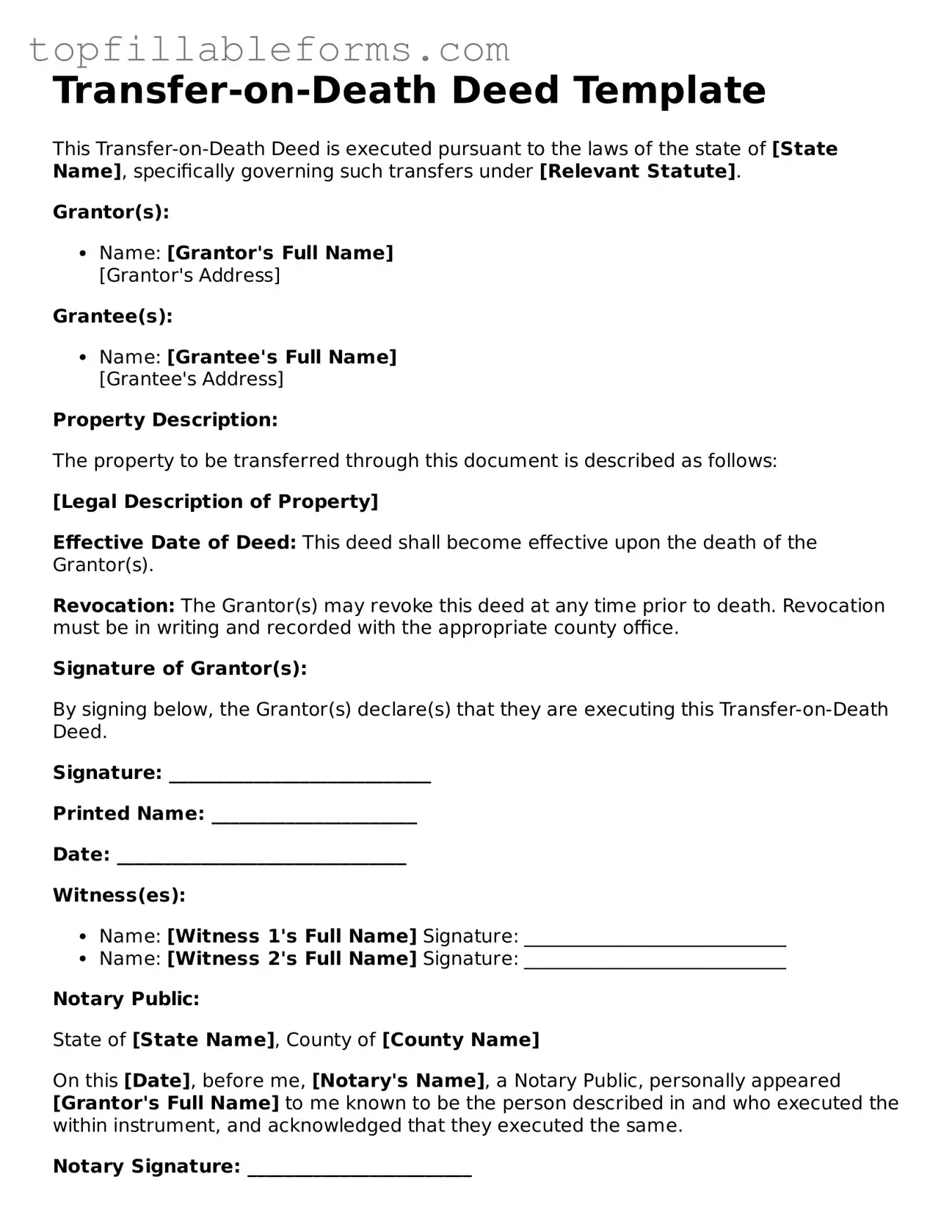Transfer-on-Death Deed Template
This Transfer-on-Death Deed is executed pursuant to the laws of the state of [State Name], specifically governing such transfers under [Relevant Statute].
Grantor(s):
- Name: [Grantor's Full Name]
[Grantor's Address]
Grantee(s):
- Name: [Grantee's Full Name]
[Grantee's Address]
Property Description:
The property to be transferred through this document is described as follows:
[Legal Description of Property]
Effective Date of Deed: This deed shall become effective upon the death of the Grantor(s).
Revocation: The Grantor(s) may revoke this deed at any time prior to death. Revocation must be in writing and recorded with the appropriate county office.
Signature of Grantor(s):
By signing below, the Grantor(s) declare(s) that they are executing this Transfer-on-Death Deed.
Signature: ____________________________
Printed Name: ______________________
Date: _______________________________
Witness(es):
- Name: [Witness 1's Full Name] Signature: ____________________________
- Name: [Witness 2's Full Name] Signature: ____________________________
Notary Public:
State of [State Name], County of [County Name]
On this [Date], before me, [Notary's Name], a Notary Public, personally appeared [Grantor's Full Name] to me known to be the person described in and who executed the within instrument, and acknowledged that they executed the same.
Notary Signature: ________________________
My Commission Expires: ________________
